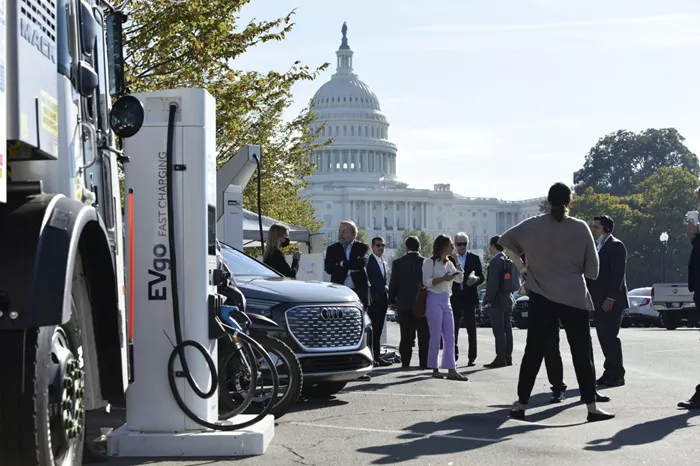The Coalition’s promise to end electric vehicle (EV) subsidies could raise the price of popular EVs by more than $15,000 under a typical novated lease, with potential immediate effects on sales. Despite this, market analysts believe that 2025 will still be a good year to buy cars, with new EV models helping to drive down prices across the market.
Opposition Leader Peter Dutton initially suggested that the Coalition would not touch the fringe benefit tax (FBT) exemption for electric vehicles, which allows customers to avoid extra taxes when purchasing cars through novated leases. However, he later clarified that the Coalition does plan to eliminate this tax discount.
The National Automotive Leasing and Salary Packaging Association (NALSPA) highlighted that the exemption saves typical car buyers substantial amounts. For instance, it cuts about $3,500 annually for a $45,000 car like the MG4. For higher-end EVs, such as the $60,000 BYD Sealion 7, the savings rise to about $4,700 a year, while a $75,000 vehicle can save around $5,500 annually. NALSPA’s CEO, Rohan Martin, argued that the exemption has provided real cost-of-living relief for many Australians and aligns with the Coalition’s other cost-saving initiatives.
The FBT exemption, which was introduced in July 2022, significantly boosted EV sales. NALSPA estimates that nearly half of all EVs sold today are through novated leases. This scheme, however, has also cost the federal budget almost half a billion dollars annually, far exceeding initial estimates.
Market analysts like Mike Costello from Cox Automotive predict that removing the exemption would lead to a “rapid” decline in EV sales. Currently, EVs and plug-in hybrids make up about 6% of the overall car market, and the exemption has been a major factor in increasing sales. According to Costello, it has been the most effective government policy in driving EV uptake.
The Coalition’s plans could also impact key suburban electorates, where families have been increasingly purchasing EVs. A NALSPA survey last year found that 90% of people who bought plug-in hybrids through novated leases cited the FBT exemption as a key factor in their decision.
While the Coalition is committed to eliminating the tax discount to save an estimated $3 billion, Dutton has refrained from directly reaffirming these cuts to avoid negative political consequences. Instead, he emphasized other policy areas, including scrapping the New Vehicle Efficiency Standard (NVES), which the Coalition has labeled a “ute tax.”
Climate Change Minister Chris Bowen criticized the Coalition’s plan, arguing that it would lead to higher taxes on EVs for both employers and employees. Bowen stressed that current policies are already helping families save on fuel, particularly in middle and outer suburbs.
If the Coalition moves forward with its tax changes, it could also complicate things for car manufacturers. The Coalition has promised to set the penalty rate for the NVES emissions reduction scheme to $0, but maintain the overall structure. This means car makers will still earn credits or debits based on their vehicle emissions but will not be penalized until 2028. The uncertainty surrounding these future penalties could make it difficult for manufacturers to plan ahead.
However, despite these potential setbacks, the market for electric vehicles is expected to continue growing. By the end of 2025, the number of EV models available in Australia is expected to soar from 79 to 143. More models in the $40,000 to $60,000 range will become available, increasing competition and potentially driving prices down.
Analysts are already seeing more discounting in the market, especially with new models coming from China and established brands. Costello expects this trend to continue throughout the year, benefiting consumers as car makers compete to offer the best prices.
On the Labor side, forecasts suggest that the impact of its NVES penalties on petrol car prices will be less severe than some critics anticipate. The Coalition has referenced data suggesting that the penalties could cost the industry up to $2.7 billion by 2028, but analysts are adjusting these estimates downward as new models, including an electric version of the Toyota RAV4, enter the market.
While the NVES was introduced to boost EV adoption and reduce Australia’s reliance on high-emission vehicles, analysts argue that the overall impact on the market will be limited as supply issues improve and new vehicles become available.

